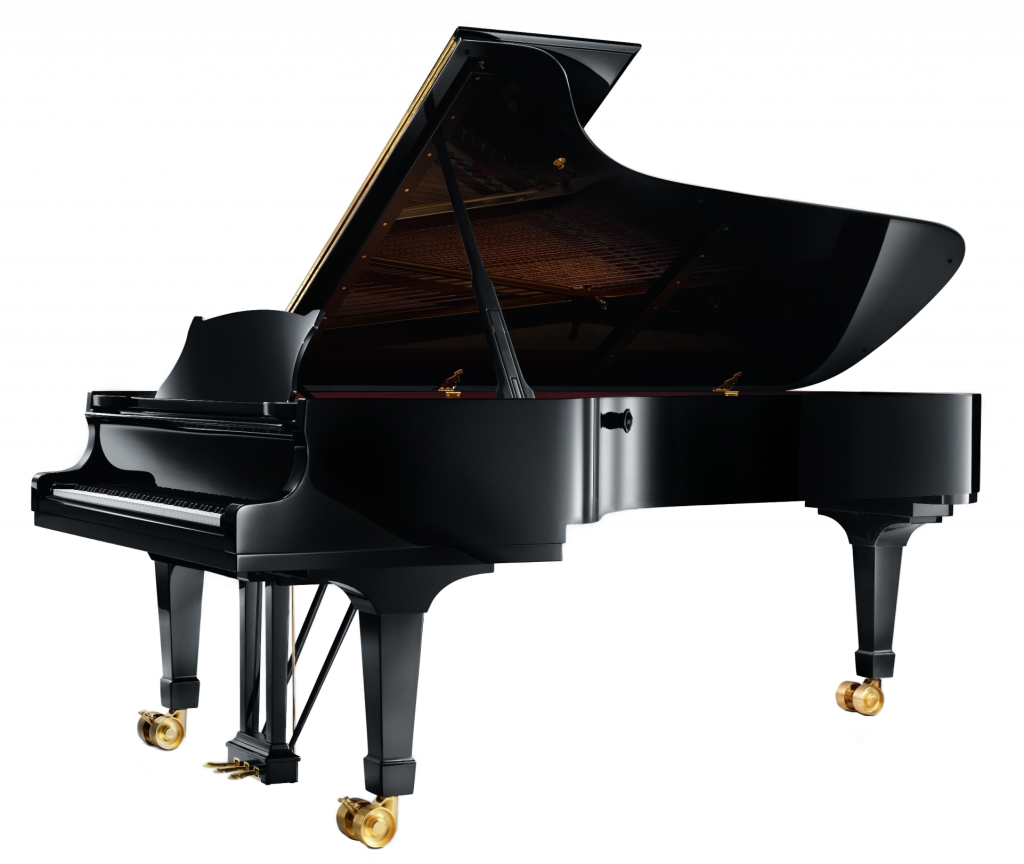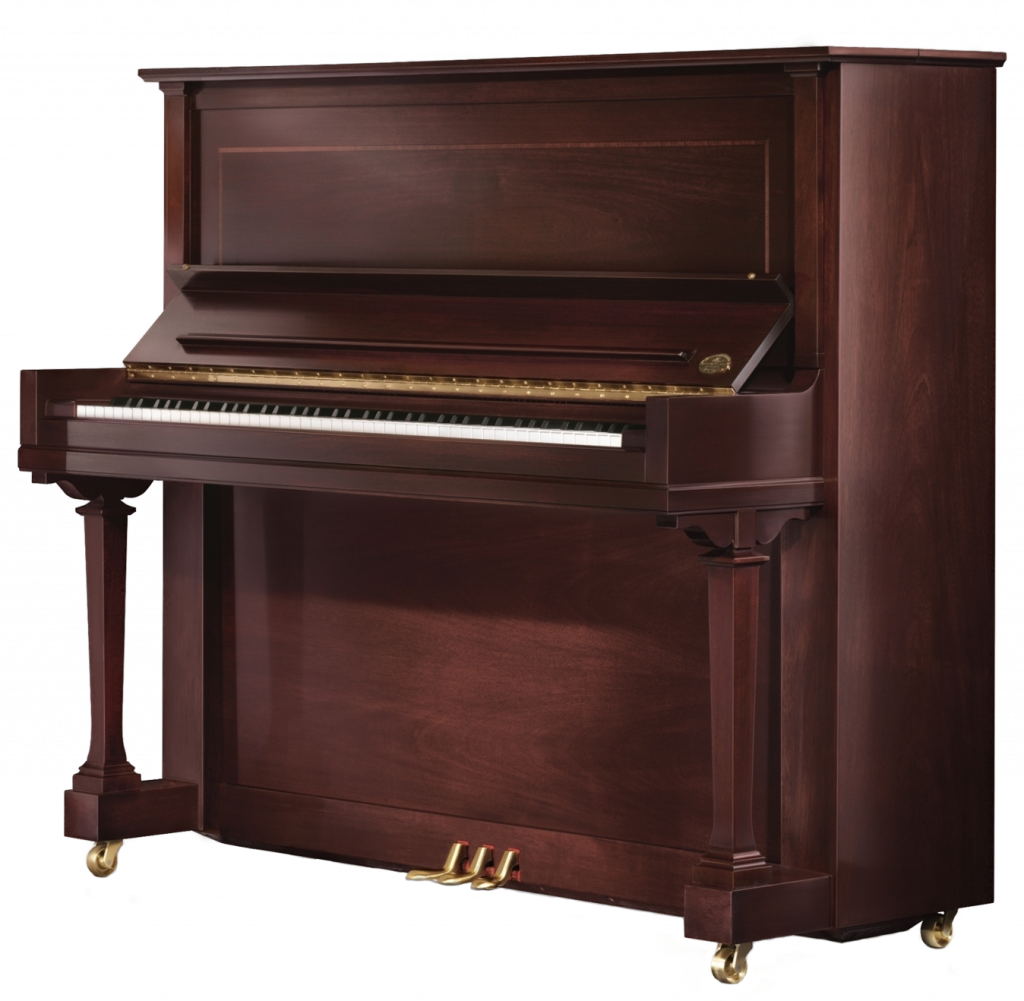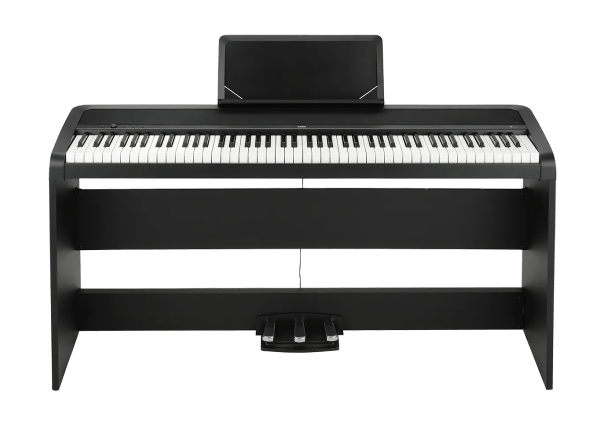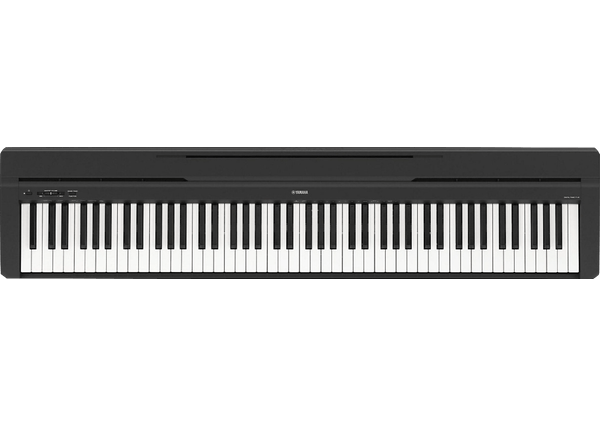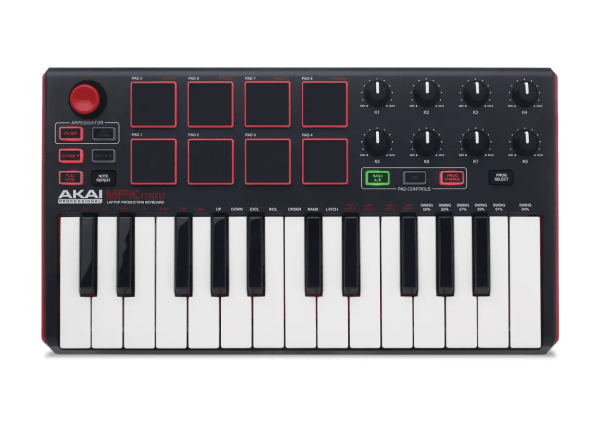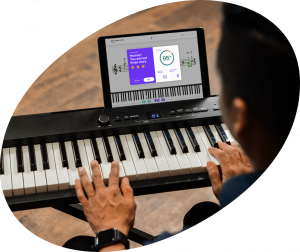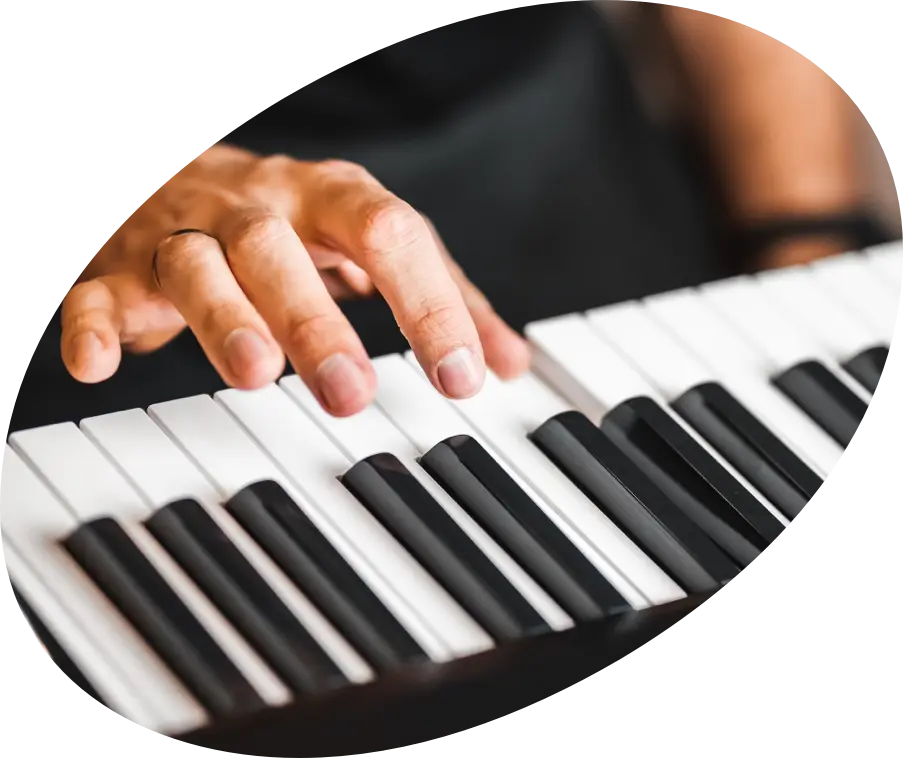
How to Play Piano: The Ultimate Beginners Guide
Are you an aspiring pianist or a piano beginner with questions about learning piano? Are you wondering which instrument to buy, which songs to play, or how to practice effectively? Are you curious about what you’ll actually learn when you start practicing music? Do you want an overview of different piano learning options? If so, then this is the piano guide for you!
Welcome to our ultimate guide on how to play piano for beginners! Before diving in, we’d first like to commend you for your interest in learning the piano. We love playing the piano, and we’re delighted that you want to play it too! This guide is written to share our knowledge and help you get started on your musical journey.
Playing the piano is a lifelong journey that brings tremendous joy and fulfillment. Whether you’re a beginner who’s eager to start, or an advanced player who’s looking to enhance your skills — this comprehensive guide will provide you with the knowledge, the techniques, and everything else you need to know to become a proficient pianist.
In this guide we’ll cover piano playing concepts — from basic to advanced — music theory, technique development, and even performance tips.
So without further ado, let’s get started!
CHAPTER 1: Beginning piano
Is piano hard to learn?
When it comes to beginning piano, you just need two things: first, a love of music, and second, the desire to learn. You already know that the piano is a beautiful instrument — why not make it a part of your life? Even if you’re just getting started, there’s a lot of amazing music you can play. From Day 1, every day of your piano journey can be a pleasure.
One of the first things we’d like to address are some pretty common questions among aspiring pianists: “Is there a right age to start piano lessons? Is learning piano as an adult harder?”
No, of course not. It’s never too late to start lessons (nor is it ever too early).
Learning to play piano is like riding a bicycle — no one is born with the knowledge of how to do it. Instead, one needs to learn by trying and practicing. Right from the start, as you begin playing you’ll build a deeper understanding of the songs and sounds you love. The joy of music starts the very first time you sit down at the piano, and that joy only grows with experience. Of course, there are amazing musicians who have been practicing piano their entire life. But we should be inspired by these people, not intimidated by them. Remember that even they were beginners once!
When learning how to play the piano, or anything new for that matter, it’s helpful to keep in mind the wise saying, “A journey of a thousand miles begins with one step.”
So, what is the first step you should take when beginning piano? For a lot of people, simply knowing where to get started is the hard part. There are so many options that it can be overwhelming. In this blog post, we’re going to walk you through some of those options, share some basic information for each, and highlight each option’s benefits to give you the confidence to choose the piano-learning path that feels best for you.
Where to begin learning piano
There are many options for beginning piano. One good option is to just dive right in. Some people feel comfortable picking a song they like, finding an online video tutorial, and giving it a shot. If the song is well-known, chances are that someone has posted an easy piano tutorial of it online. A great approach is looking for must-learn piano songs for beginners and learning them hands-on. This approach is incredibly effective if you have a lot of motivation and some self-discipline.
I think there are a lot of benefits to beginning piano this way, and I recommend trying it out to see if it works for you. It’s simple, direct, flexible, and free. At the very least, you’ll get a feel for the challenges of learning a piece of music on piano: pattern recognition, ear training, concentration, coordination, and more.
You may find that free video tutorials are completely musically fulfilling. On the other hand, you may find learning this way too challenging. There’s no question that the learning curve when beginning piano can be steep. You may feel overwhelmed by the thousands of videos available. You may want to understand the fundamentals of music better. You may want more direct feedback and clearer guidance, or to be part of a larger musical community, and not just learning on your own. If that’s the case, read on.
Online vs. in-person piano lessons
That brings us to two other options: learn piano online through a piano learning app, or take in-person piano lessons.
Of the many different methods of learning piano, beginning piano with in-person lessons may give you the structure you need to succeed. If video tutorials are too confusing or frustrating, then maybe you prefer to work with an expert who can answer whatever specific questions you have about the practice. Or, if the tutorials feel too impersonal, then maybe you want face-to-face contact. Maybe you just like a regular meeting with someone to remind you to keep practicing. These are all valid reasons to give in-person lessons a try.
Even within the category of lessons, there are different options. You can take lessons in person (the old-fashioned way), or online, through music education software. Yet again, each type of lesson has its own pros and cons. I outline some of these below.
Beginning piano by learning in person
In-person lessons will give you some human contact and support. You’ll interact regularly with an experienced musician. Finding a teacher can be challenging, but to get the ball rolling, start with these three easy steps:
1. Ask friends who play instruments
2. Look into music schools in your area
3. Google piano teachers in your area
Of the many options for learning the piano, in-person lessons are the most challenging logistically. You’ll need to think through the following questions:
1. Do you prefer for the teacher to come to your home, or do you prefer to meet the teacher somewhere else (at their home or music studio)? The pros and cons here include comfort level, equipment quality, and commuting time and costs.
2. Do you want to be part of a music school (for example, a community music center or conservatory), or are private lessons okay? You may find value connecting with a broader music community, or this may not matter to you. Price and level of commitment may also come into play here.
Let’s say you’ve worked all that out and you’ve found a teacher or two that might work. Now, it’s time for some important interpersonal and musical questions:
Do you actually like this teacher as a person?
Do you feel comfortable around them?
Are they kind and supportive?
A good piano teacher is one who is understanding and caring. Unfortunately, not all teachers are like that, and the really bad ones can even be disrespectful and discouraging. Fortunately, there are plenty of teachers who can motivate you through positivity, not negativity!
Does the teacher play the sort of music you want to play? Do you like the way they play? You need to find someone who knows the “piano language” that speaks to you. You wouldn’t take a French class expecting to learn Spanish, and you shouldn’t take lessons from a classical pianist expecting to play jazz (or vice versa).
Suppose, after all this, you’re able to find a teacher you like. Just as in any other relationship, it may be that things start out great but then go sour. Maybe you feel like you’re not getting appropriate feedback, or that your teacher isn’t being supportive enough of your goals, or attentive enough to the sort of music you want to play. If you feel like your musical needs aren’t being met, it is always acceptable to express how you feel (in words, of course). If your teacher can’t make changes to improve your experience, then it’s completely fine to cancel the lessons and look for a new teacher.
It can be a challenge to find a good piano teacher when you are beginning piano. However, for many beginners, it’s a worthwhile one. The support of a one-on-one teacher can be priceless. For others, the actual price tag will be too high. Music lessons can be expensive. Even if you’re paying just $30 a week per lesson, this adds up to $1,560 after a year!
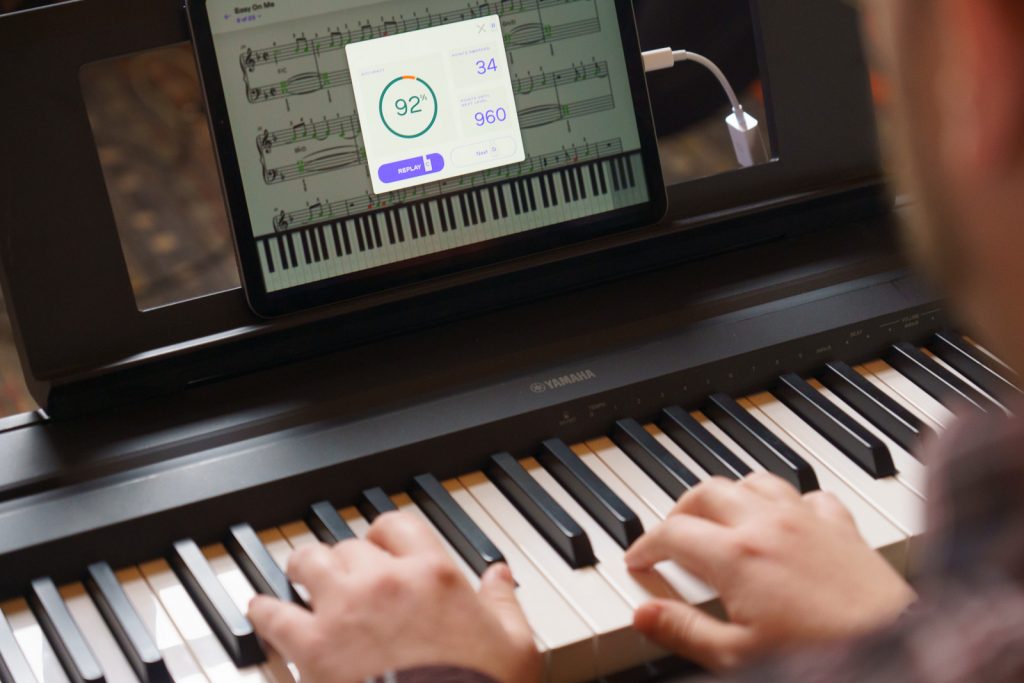
Beginning piano by learning online
That brings us to a third option: online learning, using piano software. This option is a good compromise in terms of structure, community, and price. And while each software comes with different features, here are some features that make the Playground Sessions piano-learning software attractive:
- You get all the advantages of online video tutorials. You can find a large selection of the music you love, taught in detail by engaging music instructors.
- The Playground Sessions software offers more than that, however. It integrates the videos into a holistic music education program. When you use the software, you get access to a guided music curriculum and lessons that are broken up into clear, comfortable steps. This is similar to what you’d get in a music classroom or in private lessons, for a fraction of the price.
- There’s another major advantage of Playground’s software: it provides a game-like practice environment with instant feedback. This makes it easy to see what notes you’re playing correctly or incorrectly. The feedback speeds up the process of connecting what you see with what you hear.
- Playground’s software uses gaming elements such as scores and awards to make practicing more fun. It also uses personal data to evaluate progress and make content recommendations. Although you’re not meeting face-to-face with someone for lessons, a personalized music education is still possible.
- Last but not least, the Playground Sessions piano software has a devoted community of users. They take part in community challenges, and inspire each other to improve by sharing their experiences online.
In short: if you are beginning piano, online piano software may not always be as cheap as online video tutorials, but it’s a lot less expensive than private lessons — costing just $5 a week on average. It’s a great value for what you get, and can make learning piano basics quick and easy. And though you won’t be meeting people in person to learn, if you use a software like Playground Sessions you could still be a part of a community if you want to be.
If piano-learning software sounds appealing to you, then you may want to check out Playground Sessions. It was designed with all these features in mind.
Plan your piano journey accordingly
In this chapter, we discussed a few different options for beginning piano: free video tutorials, in-person lessons, and online piano software. For each option, we weighed some pros and cons. Here’s a table that sums everything up for you:
| In-person lessons | Free online video tutorials | Online piano software | |
|---|---|---|---|
| Price | Expensive | Free | Affordable |
| Ease of setup | Complicated | Easy | Easy |
| Convenience | Inconvenient | Very convenient | Very convenient |
| Education structure | Strict structure | Unstructured | Flexible structure |
| Time commitment | Highest commitment | Flexible | Flexible |
| Social support | Teacher feedback | None | Feedback from community, social networks, and personalized analytics |
Some final words of wisdom:
Please keep in mind that these learning options are not mutually exclusive. You’re allowed to mix and match, to find the learning recipe that works best for you. Everyone is different, and experimentation is healthy. There’s no right way to learn the piano.
I started taking piano lessons when I was very young. At first, I had an unpleasant teacher. For a few years I was miserable enough that even though I loved music, I would have quit the piano.
Fortunately, I didn’t give up. Instead, I switched teachers and I found a wonderful, supportive mentor.
Now, I do not take lessons at all. Instead, I watch tutorials and use Playground Sessions’ gaming features for fun. My own musical journey has convinced me that there is no right or wrong way to learn music, as long as we are challenging ourselves to listen better and to play beautifully.
Any first step, no matter how small, is a step forward. Everything counts. Don’t feel like you need to commit a lot of time, energy, or money to start learning the piano. Having more music in your life should decrease your stress, not increase it!
Last but not least, I hope you feel empowered to find whatever other information you need to make your decision. It’s easy to find online reviews of various piano learning apps. Don’t be afraid to ask a lot of questions: any question you have is valid.
I hope this gives you an honest and helpful guide to making some next steps in your piano journey. Good luck!
CHAPTER 2: Keyboard vs. piano: Choosing what’s best for you
How to choose the right hardware
First things first, before diving into the world of piano playing, it’s important that you have access to a piano or keyboard. Since there are many piano and keyboard options, selecting the right one as a beginner is an important step on your musical journey.
So… keyboard vs. piano – which is better for learning? This is probably the first question on your mind, if you’re just starting out on your piano journey. We know from experience that buying or renting an instrument can feel overwhelming because there are so many different options and factors to consider. This is especially true when it comes to piano!
The reality is that there is no best keyboard or piano to learn with. Instead, each option has its own pros and cons. Understanding these tradeoffs will help you make an informed decision about which instrument to buy or to rent. Also, your preferred method of learning will affect your decision: in particular, if you want to use music software to practice, you’ll need to buy appropriate equipment. Once you choose your learning method, your options may narrow down.
But first, let’s explore all of the options…
What are the different types of pianos?
In what follows, we’ll discuss the following types of pianos and keyboards:
- Acoustic pianos
– Grand pianos
– Baby grand pianos
– Concert grand pianos
– Upright pianos
– Studio pianos
– Console pianos - Digital Pianos — Full-range digital pianos
– Synthesizers (range varies)
– MIDI controllers
This is not a comprehensive list, but it highlights some of the distinctions to keep in mind as you figure out which piano is a good fit for you.
What are the features that set them apart from each other?
The biggest categorical difference is acoustic pianos vs. digital pianos or portable keyboards:
- An acoustic piano is a “real piano” and makes a rich and authentic sound on its own, without the need for electricity or speakers. When you press down a key, a hammer inside the piano hits strings, causing them to resonate, and this resonation creates sound. This is what most people think of when they imagine a piano in a concert hall or in someone’s living room. Another characteristic of acoustic pianos is they tend to have 88 keys.
- Digital pianos and portable keyboards, on the other hand, require electricity and speakers to produce sound, and often come with additional features and built-in sounds, like organ sounds, string sounds, and even the harpsichord. With a digital piano or portable keyboard, when you press down a key, an electronic signal triggers a piano sound (whether recorded or synthesized), which is then played through speakers or headphones.
Acoustic pianos differ from digital pianos and keyboards in several fundamental ways:
- Price. Acoustic pianos tend to be more expensive than digital pianos and keyboards. This is because of the huge amount of labor and expertise involved in making an acoustic instrument.
- Size and portability. Acoustic pianos are big, heavy pieces of furniture. They take up a lot of space and you probably won’t want to move them around once they’re set up. Digital pianos are somewhat lighter, but may still be too heavy to move around easily. Keyboards tend to be lighter and more portable.
- Maintenance. Acoustic pianos are much more involved as they require tuning and regular upkeep, whereas keyboards and digital pianos don’t.
- Touch and Feel: Acoustic pianos have “weighted keys” (essentially, they require a little bit of force to press down), while keyboards and digital pianos offer a variety of key actions ranging from weighted to semi-weighted or unweighted.
- Number of Keys: Acoustic pianos typically come with 88 keys, which is considered “full size.” While most keyboards and digital pianos come in 88 keys, it’s common to also find them with fewer keys, such as 76, 61, or even 49 keys.
- Sound Features: Acoustic pianos produce just one sound — a natural, “real” piano sound. Keyboards and digital pianos offer a wide range of built-in sounds, effects, recording capabilities, and connectivity options.
- Pedals: Acoustic pianos come with 3 pedals, with each affecting the sound differently, whereas keyboards and digital pianos most often come with 1 pedal, and occasionally 2.
Given these differences, it may seem like digital instruments have nothing but advantages compared to their acoustic counterparts. Indeed, digital keyboards are generally cheaper, lighter, more flexible, come with more features, and are less fussy than acoustic pianos. But let’s not forget the most important category, which is also the most subjective: sound (and sound quality). Acoustic pianos sound different from digital ones, period. They set the standard for what all other digital pianos and keyboards try to imitate, and as the saying goes: there’s nothing like the real thing.
How to choose the best piano for beginners
For some, the allure of the acoustic piano sound will be worth its price tag and commitment. If you are interested in buying an acoustic piano, you should be aware that there are various acoustic subcategories, largely based on size. And despite what some may think, size isn’t just for show: it has an effect on the instrument’s sound, especially for the low notes, which require longer strings for a clearer sound.
- Grand pianos have the strings stretched out horizontally, and tend to be the largest (and most expensive) options available, ranging from around 5 feet long (a baby grand piano) to over 9 feet long (a concert grand).
- Upright pianos take up less space because the strings are arranged vertically. They include studio pianos, which are about 4 feet tall, and console pianos, which are a little shorter
The “best” option for a beginner is whatever lies at the sweet spot of affordability and sound quality.
Types of keyboard pianos
Despite how great they sound, don’t assume that you need to invest in an acoustic piano to start making music. Many digital instruments sound great too, for a fraction of the price. There’s even greater variety among digital pianos and keyboards, which vary not only in size, weight, and sound quality, but also in basic functionality.
- A digital piano refers to an instrument emulating an acoustic piano. These often have built-in speakers and weighted keys. Many support a connection to computer software or other digital instruments using MIDI or USB. They tend to be full-range keyboards, with 88 keys.
- They’re a good choice for people who want to play piano music, but who don’t want to deal with the hassle or expense of an acoustic piano.There are also synthesizers. They are often more portable than a digital piano, with fewer keys, though some do have the full range of 88 keys. Synthesizers generally aren’t weighted and don’t have built-in speakers. Each synthesizer has its own unique range of electronic sounds, often including piano sounds. As with digital pianos, they generally support a MIDI or USB connection.
- These are especially good for people who want access to non-piano sounds, or who want to experiment with music or audio production software.
- Last but not least, there are MIDI controllers which don’t make any sound on their own at all. These are exclusively MIDI or USB devices, designed (as their name suggests) to control other electronic instruments.
- These are the cheapest option, but they always require additional software or hardware to actually make some sound. They tend to be used a lot by music producers.
How to choose the best keyboard to learn piano
If you want to buy a digital keyboard, here are a couple additional guidelines to consider:
- Range (number of keys). A full-size piano is 88 keys (though some special grand pianos have even more keys!). Synthesizers and controllers are often smaller, down to 25 keys. For learning piano, you want a keyboard with at least 49 keys.
- Compatibility. If you want to hook up your keyboard to your computer or some other device, make sure that the keyboard supports an appropriate hardware interface, such as MIDI or USB.
Keyboard vs. piano: Weighing your options
So now that we have a better sense of how keyboards and pianos compare, here’s a keyboard vs. piano comparison table that summarizes some of the differences we discussed in this chapter.
| Price | Portability | Range | Tuning | Weighted keys | Self-contained | |
|---|---|---|---|---|---|---|
| Acoustic grand piano | Relatively expensive | Not portable | 88 (or more!) keys | Required | Yes | Yes |
| Acoustic upright piano | Relatively expensive | Not portable | 88 keys | Required | Yes | Yes |
| Digital piano | Varies | Varies | Generally 88 keys | Not required | Varies | Varies |
| Synthesizer | Varies | Varies | Varies | Not required | No | Varies |
| MIDI controller | Relatively cheap | Portable | Generally fewer keys | Not required | No | No |
To wrap up, a few final words of wisdom:
- Take your time to explore the options and listen to the differences between them.
- It’s worth talking to some experts (an experienced piano teacher or tuner, for example), and may be worth hiring one to help you out, especially if you’re expecting to make a major purchase. (This is especially true if you’re looking to buy a used acoustic piano. An expert will know what questions to ask when buying a used piano: for example, is the soundboard intact? Will you have to fix anything that’s broken?)
- That said, don’t assume that you have to pay a lot of money to get started! A pro for learning on a digital keyboard is that some piano learning apps, such as Playground Sessions, offer bundles which allow you to purchase a membership to the learning app as well as a keyboard and its accessories — all for a discounted rate.
Have fun exploring, and good luck finding an instrument that’s right for you!
CHAPTER 3: Learning piano basics
Piano playing 101
From the moment you start playing the piano, you’ll start developing your basic skills. Some of these skills are physical, such as how to sit comfortably and coordinate your movements. Others are perceptual, such as recognizing the keys on the keyboard and the different sounds they make. The foundation you build through practice will support you through your whole life as a musician.
The core concepts of piano playing are simple to describe and endlessly fascinating. Even after years of practice, I’m still discovering new things about the fundamentals! For me, this is one of the pleasures of learning music.
Learning the fundamentals
Let’s take a little tour of piano basics! Our goal is just to point out some things that can help you with beginning piano, which can serve as a point of focus for how to practice and experiment. Let’s jump right in and try to find something that gets you excited about playing the piano and learning music!
Posture
Let’s start with the body.
One of the most important things to practice at the piano actually takes place before you play a single note — and that is ensuring that you’re setting yourself up with the right posture and hand position.
Maintaining correct posture and hand position is crucial for playing the piano comfortably and effectively. Along with being more comfortable and efficient, when playing with the proper posture and hand position, you’ll also help prevent yourself from causing any unnecessary injuries.
When I sit at the piano, I like to be mindful of my posture. I want to feel comfortable when I’m playing, so I try to sit upright without straining my back. I also check to make sure my shoulders are relaxed. I even find it helpful to sit for a minute or two without playing anything at all, just to be aware of how I feel, and to establish some good energy before practicing.
People have a lot of opinions about the right and wrong way to sit. But everyone’s body is unique, so the posture that works for me may not work for you in exactly the same way. I recommend experimenting to get a feel for what works for you.
Here are some questions to ask yourself:
- Do you prefer sitting closer to the keyboard or further away?
- How does it feel to elevate your wrists to different levels?
- How does it feel to play with different muscle groups (your fingers, your wrist, your arms)?
Anything goes, as long as you feel comfortable and don’t hurt yourself!
With that said, here are some general guidelines to keep in mind when thinking about your overall posture and hand position:
Posture:
- Sit up straight: Sit with a straight back, maintaining good posture throughout your playing session. Avoid slouching or leaning excessively.
- Feet flat on the floor: Place both feet flat on the floor. This helps maintain balance and stability while playing.
- Distance from the piano: You should sit close enough to reach the keys comfortably without straining, but not so close that you feel cramped.
- Height: Adjust the bench or seat height so that your arms and forearms are parallel to the floor when your hands are on the keys. This allows for a natural and relaxed hand position.
Hand Position:
- Relaxation: Keep your hands and fingers relaxed. Tension in the hands can impede your playing and lead to discomfort or injuries.
- Curved fingers: Maintain a gentle curve in your fingers, especially in your knuckles. Avoid flat or collapsed fingers, as this can restrict your finger movement and control.
- Finger placement: Place your fingers on the keys with the fingertips, not the pads. This allows for better control and precision.
- Thumb position: Position your thumbs slightly lower than your other fingers. The thumbs should be relaxed and lightly curved.
- Wrist alignment: Keep your wrists level with the piano keys. Avoid excessive bending or collapsing of the wrists, as it can lead to tension and strain.
- Parallel hand position: Position your hands parallel to each other, with your fingers aligned over the keys. This helps with coordination and facilitates playing with both hands simultaneously.
- Hand movement: Use your fingers, not your entire arm, to press the keys. Minimize unnecessary arm movement and keep your hands close to the keys for better control and agility.
Remember, these guidelines are meant to provide a foundation for good technique, but everyone’s body is unique. It’s essential to find a posture and hand position that feel comfortable and natural for you. Regular practice with proper posture and hand position will improve your playing technique, prevent injuries, and allow for greater ease and expression at the piano.
Now that you have some guidelines for your body, let’s turn to your mind. What does a musician have to know to make sense of music? In order to begin piecing the building blocks of music together, you’ll first need to familiarize yourself with the musical alphabet.
What is the musical alphabet?
Before diving in to start playing, one thing you’ll want to do is familiarize yourself with the piano’s layout and the names of the piano keys. The great news is that the layout of keys on a piano consists of a series of white and black keys arranged in a repeating pattern (which we’ll get into later). And each key in this pattern is named after a letter from the alphabet — producing what’s known as the “musical alphabet”.
The musical alphabet is just like the normal alphabet, but shorter! Just seven letters — A, B, C, D, E, F, and G. By arranging these seven letters in different combinations, we get all the patterns and sounds of music. The letters are used to name notes (the written symbols of music) as well as keys (what you actually play on the piano).
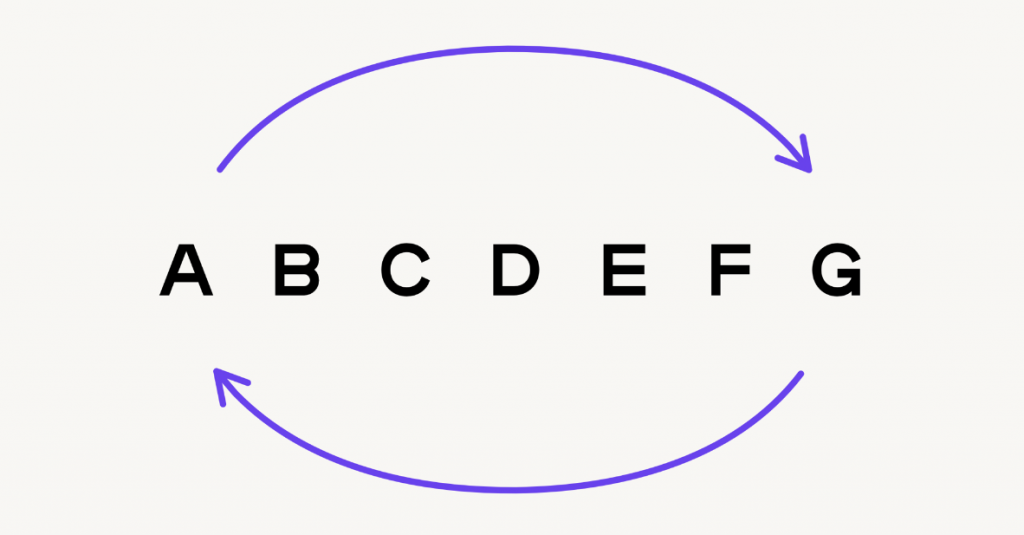
Soon, we’ll see that the piano keys follow this pattern too.
As a musician, you’ll learn the musical alphabet forwards, backwards, and inside out. Here are some things you can do to practice the musical alphabet:
- Try reciting the alphabet going in alphabetical order starting from any letter:
for example, if I start on D, I would recite D E F G A B C D E … - Try it in the other direction, in reverse alphabetical order: D C B A G F E D C …
- Try skipping every other letter: D F A C E G B D F …
- You could even make up your own pattern!
Playing around with the musical alphabet will make you a stronger, more confident musician. Any pattern you can imagine has a deep musical significance, related to music notation, piano scales, and chords.
Navigating the keyboard/keys (white keys, black keys, etc.)
Now, let’s tie the alphabet to the reality of the piano. Of course, different types of keyboards have different numbers of keys: a grand piano has 88, while electronic keyboards typically have 76, 61, 49, or even fewer. But all keyboards have the same repeating pattern of white and black keys:
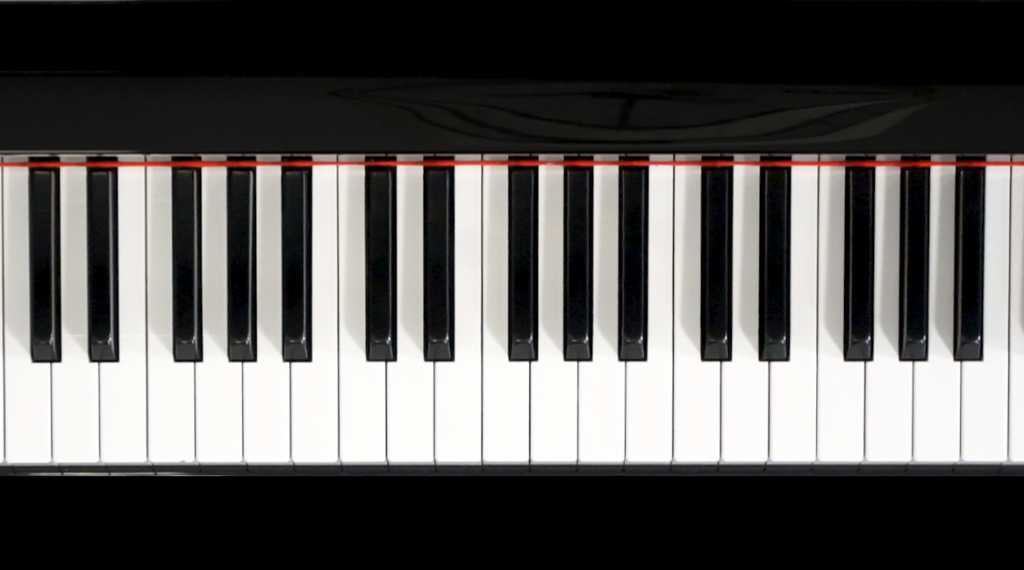
Notice that most of the keys on the piano are white keys, and they’re separated near the back of the keyboard by black keys. These black keys are arranged in groups of 2 and 3. Can you spot these black-key groupings?
Being able to spot the groups of black keys is very helpful in grounding yourself on the keyboard and identifying the names of their surrounding notes. For example, looking at a group of 3 black keys and starting with the white key just between the 2nd and 3rd black key of that group, how many white keys do you count before you reach the white key that sits just between the next group of 3 black keys? It should be no surprise that there are seven of them:
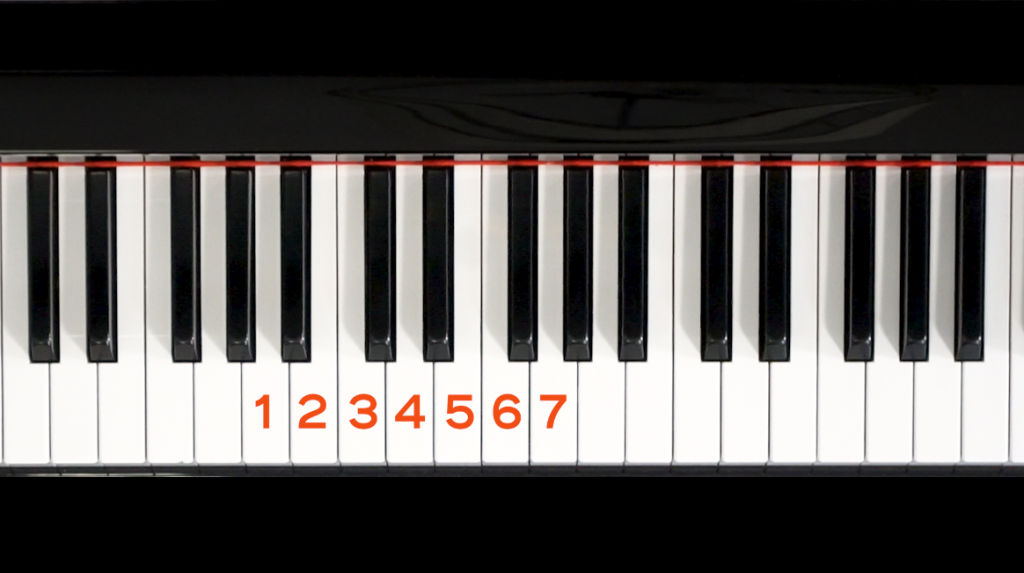
One for each letter of the musical alphabet!
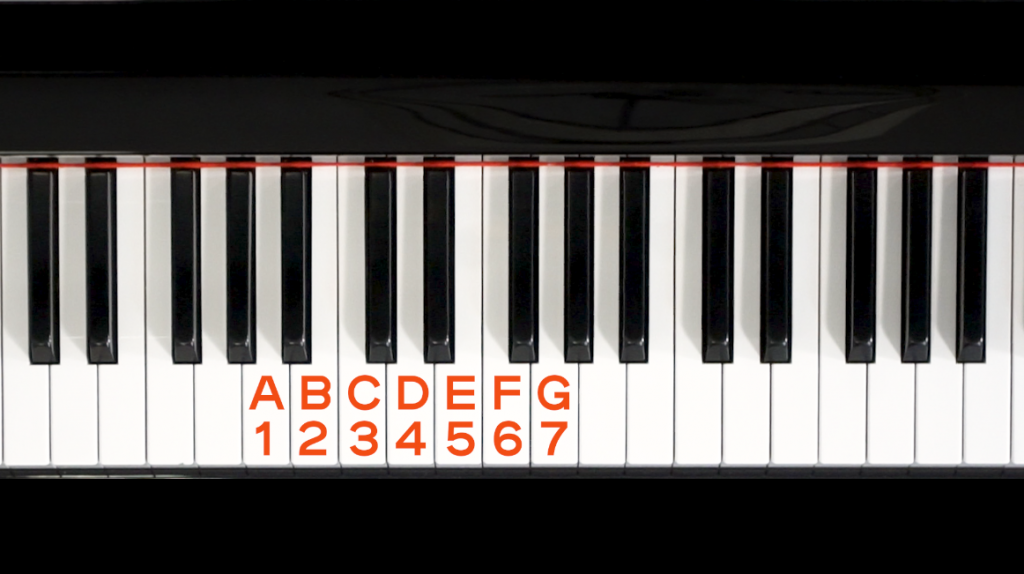
This pattern repeats throughout the keyboard.
Unlike the white keys which each have one letter name (A, B, C, D, E, F, or G), the black keys have two names each, as they can be referred to as sharps (#) or flats (♭), depending on the musical context.
Before we move on, there are 2 more terms to learn about the names of the keys, and that’s Middle C, and octaves.
In the middle of the piano keyboard, there is a specific white key known as Middle C. Middle C is an important reference point for finding other notes on the keyboard and it is essentially the borderline for determining which notes to play with which hand — notes to the left of Middle C are typically played with your left hand, and notes to the right of Middle C are typically played with your right hand.
Last but not least, we have octaves. An octave consists of eight consecutive white and black keys, including all the sharps and flats.
Now that we know some of the fundamentals of the piano keys, let’s get your hands on the piano and use them to make some music.
Starting positions
Different piano songs involve different hand positions. Let’s put our left and right hands on the piano, that way our fingers rest on keys like this:
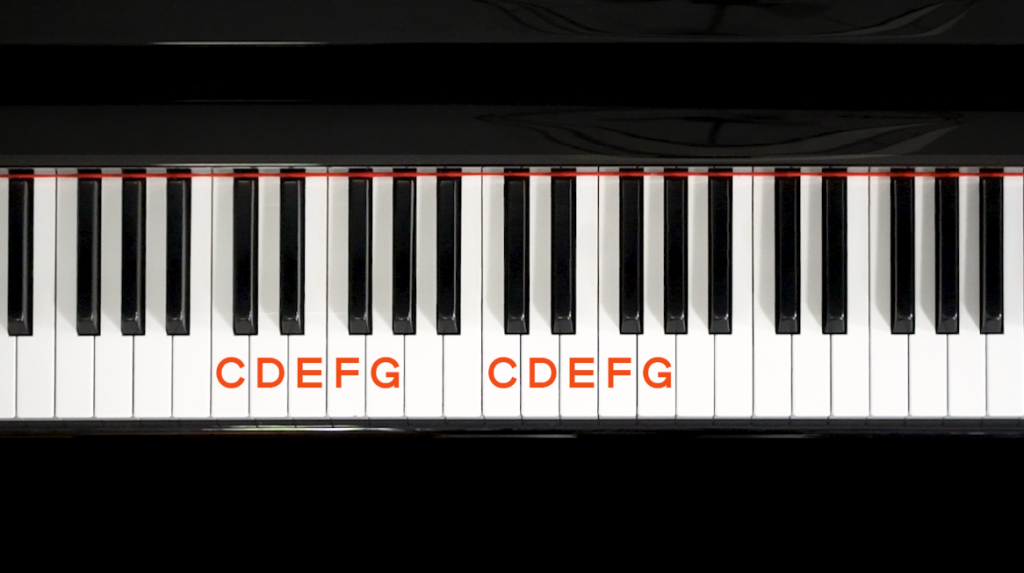
Holding your hands in this position may feel strange the first time you try it. This is a good opportunity to check your posture. Do you feel cramped or uncomfortable? Is there a way to release some tension?
Let’s explore what we can do in this hand position. There are a lot of things to try out:
- Try playing some individual keys with your right hand and then your left hand. What feels easy and natural? What feels strange? Which fingers are stronger, and which are weaker?
- Try playing with both hands. Play the C key with your right and left hand at the same time. Then try the same thing with the D key, and so on. Does it sound like you’re playing one key or two? Now that you hear them played together, does it make sense that different keys can have the same alphabet letter?
For fun, let’s try a C major scale, from C up to G and back:
- Play C D E F G F E D C with your right hand. Try the same thing with your left hand, and then with both hands together. Maybe try signing along too. Can you hear how the music rises and falls?
Now let’s try out some chords. A chord is three or more notes together.
- What’s the most beautiful chord you can make? What’s the noisiest?
- While experimenting, try playing C, E and G at the same time. This is called a C major triad. Does it sound familiar? What does it express to you? There are also minor triads, which involve a different hand position. Major and minor may sound different to you, and evoke different emotions. Some people believe that major sounds happy, while minor sounds more melancholy.
Again, there’s nothing better than experimenting with an open mind, and discovering some piano concepts on your own. When you’re learning to play, it’s important that you’re playing to learn!
Understanding melodies
Now that we know how the keys are organized, and we know a little bit about their names, let’s take a look at how they’re used to create melodies.
A piano melody is a sequence of notes that is musically satisfying and fulfilling, and that speaks to you: the right keys played at the right times. Keeping your hand in the very same 5-finger position, let’s get you playing a simple melody. You already know what “Mary Had a Little Lamb,” sounds like, right? In that case, I’ll leave the challenge to you: can you figure out, by ear, what keys you need to play, and in what order?
Here are some hints: Start on E. You just need C, D, and E.
In addition to giving you a taste of piano knowledge and whetting your appetite for more piano practice, I hope that this experience convinced you that a huge part of learning music is listening. Your ears are your most valuable musical instrument!
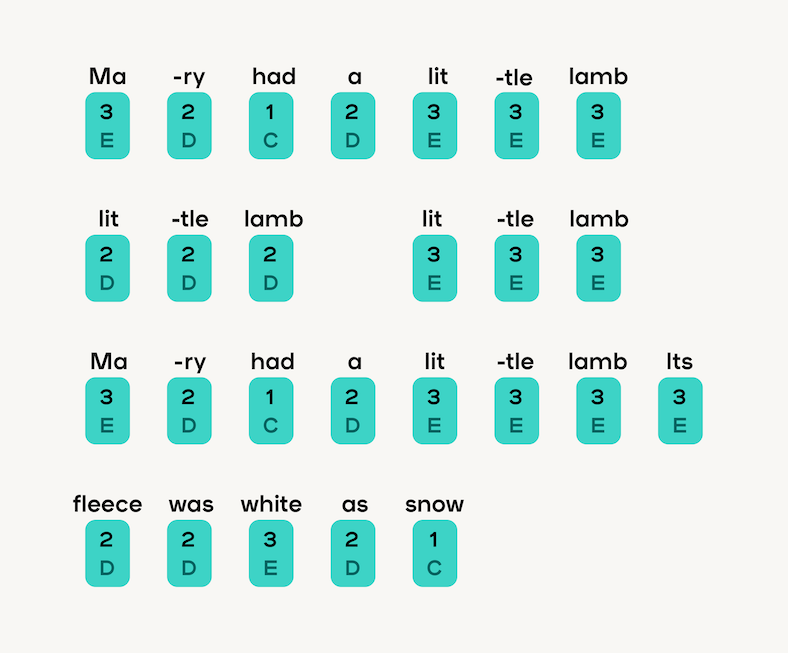
How to develop piano technique
To wrap up, I want to say a few things about piano playing techniques. It’s worth knowing that there are some special exercises focusing on proper piano technique, designed to develop finger strength, independence, and dexterity. Some pianists think that these exercises are important, while others aren’t really interested in them at all. You can be an excellent musician either way.
My own feelings about these exercises are in line with what I’ve already said about posture, hand positions, and melodies. You should feel empowered to try out different sorts of exercises, and then choose the methods that work best for you. What’s important is experimentation, careful listening, and a playful attitude.
I hope that this post taught you something about piano basics that you didn’t know before. I also hope it inspired you to try something new, and to have confidence in your own musical experience! Once you get the hang of the basics, it might be a good idea to learn how to read piano sheet music to build a stronger understanding of music and how it relates to your new favorite instrument!
Good luck and happy playing.
CHAPTER 4: How to read piano sheet music
Why should I learn to read sheet music?
One of the most common questions about learning piano that beginners ask is: “Do I need to learn sheet music to play piano?” The answer is no, but learning to read sheet music helps a lot.
But why is it important to learn how to read sheet music for piano? Reading music will help you to discover musical patterns in writing, which will strengthen your musical imagination and make your piano playing clearer and more beautiful.
Of course, the ability to read music is not just pleasurable, but also useful. Music literacy will help you learn a lot of music that’s too long or complicated to play by ear. Last but not least, music literacy opens up possibilities for writing music, whether you’re interested in arranging (reworking pieces of music for other instruments), transcribing (writing down what you hear in recordings), or creating original compositions.
In what follows, we’ll explore the magic of music notation. We’ll learn the basic elements and give you enough of a foundation that you can explore some sheet music on your own.
What is music notation?
Simply put, music notation is the written language of music. When considering music notation, also commonly referred to as “sheet music”, an easy way to think of it is to compare it to any other written language. Listening to the language of music is equivalent to listening to someone speak any other language, like English — and writing spoken language down on a document is equivalent to writing music down on sheet music.
Now, just like any other language that’s full of consonants and vowels that are strung together to form phrases and sentences — music works the exact same way! In music, different notes and note values are strung together to form melodies and phrases.
One good way to start reading music is by taking a look at the sheet music for a melody that you already know. For example, here’s the sheet music for the nursery rhyme “Are you sleeping, Brother John?” (also known as “Frère Jacques”):

Don’t let any unfamiliar symbols scare you off! You don’t need to understand every symbol you see to read along, and you can use your ears to guide you. Think of notation as something that enhances your listening, not as something that replaces it. If you know the song, try singing it and following along with the lyrics you see. Then try playing the melody on the piano by ear, using your right hand. Hint: start on Middle C with your thumb. Then you only have to play white keys, and you don’t have to move your hand.
Here’s the hand position:
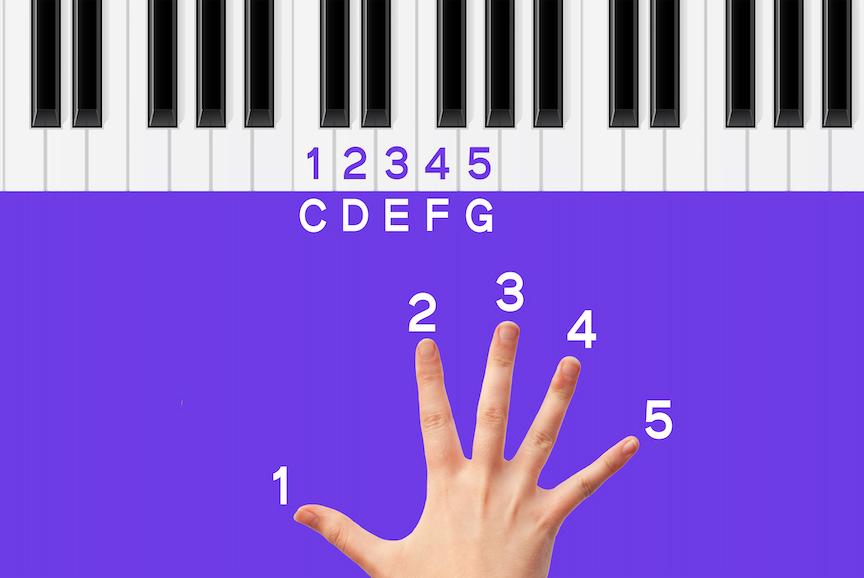
How does sheet music work?
Understanding how sheet music works is actually easier than you may think. Sure, there are a bunch of lines, numbers, and shapes — but they all provide information about the different elements of music that you’ll be playing. Once combined, these lines, numbers, and shapes produce the roadmap needed to play the song in front of you.
Let’s take a look at how these elements work.
The Staff: The staff is a set of five horizontal lines, separated by four spaces. Each line and space represents a different pitch on your piano. When a staff is placed on a staff’s line or space, it instructs which note to play on your piano.
Clefs: A clef is a symbol placed on a staff that tells you which range of the piano to focus on. There are two common clefs used in piano music: the treble clef (also known as the G clef) and the bass clef (also known as the F clef) and the bass clef represents the lower notes on the piano which are typically played with your left hand.
- Treble Clef: The treble clef is identified by the curly line that wraps around the second line from the bottom of the staff. The treble clef represents the notes that are higher than Middle C — which are typically played with your right hand. The lines of the treble clef staff, from bottom to top, represent the notes E, G, B, D, and F (Every Good Boy Deserves Fudge). The spaces between the lines represent the notes F, A, C, and E (FACE).
- Bass Clef: The bass clef is identified by the two dots that surround the second line from the top of the staff. The bass clef represents the notes that are lower than Middle C — which are typically played with your left hand. The lines of the bass clef staff, from bottom to top, represent the notes G, B, D, F, and A (Good Boys Do Fine Always). The spaces between the lines represent the notes A, C, E, and G (All Cows Eat Grass).
- Grand Staff: A grand staff is two staves (plural for “staff”) that are combined with one staff on the top and the other on the bottom, connected by a vertical line and a brace. The top staff represents music played with your right hand, and therefore usually contains a treble clef — and the staff on the bottom represents music played with your left hand, and therefore usually contains a bass clef.
- Note Values: While the placement of notes on a staff’s lines or spaces tell you which notes to play, the shape of a note tells you its duration — or in other words, how long to hold each note down when played. The most common note values include whole notes, half notes, quarter notes, and eighth notes. A whole note is a hollow oval shape, a half note is a hollow oval with a stem, a quarter note is a filled-in oval with a stem, and an eighth note is a filled-in oval with a stem and a flag.
- Ledger Lines: Ledger lines are small lines that extend above or below the staff. They are used to notate notes that fall outside the range of the staff. Ledger lines provide additional space to notate higher or lower notes.
By understanding the staff, clefs, note values, and note placement, you can read and interpret piano sheet music. With practice, you’ll become more proficient at quickly identifying the notes on the staff and translating them into the corresponding keys on the piano. Start with simple exercises and gradually progress to more complex pieces to strengthen your sight-reading skills and fluency in reading staff music on the piano.
Playing music with both hands
Now that we know how some of the fundamental sheet music elements work, let’s see them in action with a music example.
As you’ll recall, the grand staff (highlighted in red in Figure 2 below) is the set of horizontal lines where all the piano music symbols are laid out:

The grand staff breaks down into two separate five-line staves, one on top and one on the bottom. The notes in the top staff are played with the right hand, and the notes in the bottom staff are played with the left hand (in this example, there aren’t any notes for the left hand to play).
The top staff is generally marked with a treble clef and the bottom staff with a bass clef, as we see in Figure 3:

A treble clef means that the notes on that staff are higher (mostly above Middle C), while a bass clef means that they’re lower (mostly below Middle C).
Notes on (and off) the staff
As you’ll also recall, the notes on the top staff (the right-hand staff) correspond to the keys E G B D F (in ascending order):

Sometimes you’ll hear the mnemonic “Every Good Boy Does Fine” to help remember this.
The spaces of the upper staff (again ascending) correspond to F A C E.
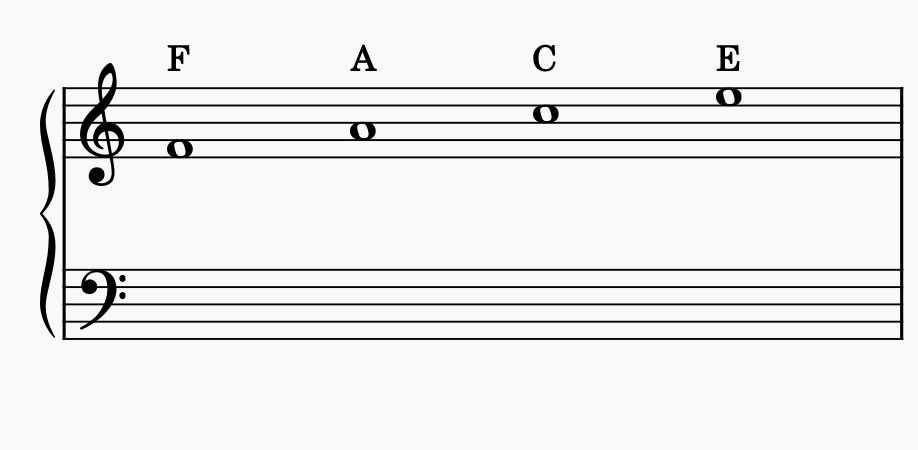
Figure 4 shows the notes of the “Are you sleeping” excerpt, along with the letters for the piano keys they represent:

You can see that keys that are next to each other on the keyboard are represented by adjacent notes on the staff. For example, the lower line of the top staff is for the E key above Middle C, and the space above that is for the F key to its right. In this melody, we see most of the notes on the lines and spaces of the staff. The Middle C notes, however, are lower than the staff, so we need to write them with short, extra staff lines, called ledger lines.
Piano tempo and beats
Music notation doesn’t just show you which keys to play, but also how long to hold them. In the next section I’ll describe the symbols that have to do with rhythm and timing.
Note durations
The style of a note gives you information about its duration. In this example we see a lot of quarter notes which are filled in (see Figure 5):

There are also a couple of half notes which are hollow (See Figure 6)

A half note is always twice as long as a quarter note: which makes sense because 1/4 + 1/4 = 1/2. Try singing the “Are you sleeping, Brother John?” melody again: can you hear that the “John” note is twice as long as the other notes?
Some other durations are eighth notes and whole notes:
Just like you’d expect, there are two eighth notes in a quarter note, and two half notes in a whole note. In the lower staff, there are no notes, but only rests, which are symbols for silence. The rests are highlighted in Figure 7:

Tempo basics
Tempo (Italian for “time”) just means “playing speed.” At the start of “Are you sleeping”, we see a tempo marking (or metronome marking), highlighted in Figure 8:

This tempo marking recommends a speed of 120 quarter notes per minute (that is, two quarter notes or one half note per second).
Bars, meters, and time signatures
You may have noticed that the melody is divided into four separate boxes by vertical lines, highlighted below:

Those lines are called barlines and the boxes are called bars or measures. Observe that each bar is four quarter notes long:

We can figure this out by adding together note durations, or by looking at the time signature, a pair of numbers on each staff next to the clefs.

A time signature looks sort of like a fraction, though without the dividing line between the two numbers.
The top number tells us the number of notes per bar, and the bottom number gives us our reference duration. Here, 4 on the top means, “Each bar has four…”, and the 4 on the bottom means, “…quarter notes.” This is consistent with what we discovered before by counting notes.
Chords and chord symbols
When playing music on the piano, the right hand usually provides the melody, while the left hand provides the supporting harmonies. A fundamental way that harmonies are played on the piano is through “chords.”
Understand how chords are “built” — (a chord consisting of three notes) —and learn about major and minor chords. Explore how major and minor chords are related and practice playing them in various keys and inversions.
A chord is a group of three or more notes played together to create a harmonic sound. Chords are formed by combining specific intervals between the notes. The most common way to build chords is by stacking two “thirds” on top of each other. These types of chords are called “triads.”
Let’s give the left hand something more exciting to do. We’ll add some C major triads (3-note chords, C-E-G in the octave below Middle C) in the left hand like this:
Each of the triads is a whole note long. In some sheet music, you may see chord symbols above the staff:

Each of the triads is a whole note long. In some sheet music, you may see chord symbols above the staff:

“CM” is just a shorthand for a C major chord. Sometimes you’ll see C, CMaj, or CΔ instead. There are other symbols for other chord types (minor, diminished, dominant, etc.) and voicing hints (inversions, alterations, etc.). A lead sheet is stripped-down notation that shows the melody and the chord symbols without the notes of the chords (you’re expected to figure those out from the symbols):

A chord chart is even more schematic. It shows just the chords with some slashes for rhythmic patterns (you’re expected to know the tune already):

These are looser forms of notation that put more emphasis on memory, improvisation, and personal style. Jazz musicians often play from lead sheets or chord charts, while classical musicians generally use fully-notated sheet music.
Before we move on, I’d like to point out that one key element of chords — triads in particular — is that their notes can be rearranged into different orders, creating different inversions.
Dynamic marks
You’ve now seen some ways to strip staff notation down. You can also build it up, making it even more specific. For example, here’s the “Are you sleeping” melody with dynamic marks, which are suggestions for playing softer or louder:

The “p” (an abbreviation for piano, Italian for “soft”) means “play quietly.” The “f” (forte, Italian for “strong”) means “play loudly.” The is a crescendo, which means “get louder,” and the is a decrescendo, which means “get quieter”.
How to practice reading sheet music
Now you’ve seen many of the basic elements of music notation, as well as some elements that are not so basic. If you’d like to learn how to practice piano with what you’ve learned so far, here are some good next steps:
- Practice reading music in piano learning app such as Playground Sessions. Playground’s software shows you interactive sheet music while highlighting the keys you need to play.
- Search online for the sheet music for other beginner piano songs that contain melodies you likely already know: nursery rhymes, jingles (“Shave and a haircut”, “Happy birthday”, etc.), maybe even some songs that you like. See how much of the notation you can figure out by ear.
- Try making up some simple melodies of your own, and writing them down. It may be helpful to break up the task into two parts: first, figuring out where to put the notes on the staff; second, figuring out the rhythms.
- Sight reading practice: write down some notes in random positions and patterns on the staff. Can you figure out which keys to play? Try the same exercise but with different rhythmic patterns.
Hopefully this chapter opened your eyes and ears to something new. Have fun reading and exploring!
CHAPTER 5: Must-learn piano songs for beginners
Learning by playing
Learning to play songs on the piano is an excellent way to develop your skills. To be a musician, you need to play music, not just drills and exercises! While there’s value to learning how to read piano sheet music and learning piano basics, this knowledge should always be applied with real songs. From the very first day of your piano journey, you should experience the joy of playing real music. Whatever you know about music right now is enough to dive in. You can, and should, use your ears to guide you.
To help you learn by playing, we’ll discuss some fun songs to learn on piano. We’ll also review a chord progression that fits with many well-known melodies, and wrap up with some practice tips for learning faster and more efficiently.
Easy piano songs for beginners
Think of a melody you already know by heart. It could be a simple, beautiful song melody like “Lean on Me”, a ditty like “Happy birthday”, or a lullaby like “Twinkle twinkle little star.” These all count as real music! They’re good beginner piano songs because you already know what they’re supposed to sound like. You can try learning them by ear, without any sheet music.
Let’s take the first verse of “Lean on Me” as an example.
To warm up your inner musician, take a few minutes to try out these vocal exercises:
- Imagine how the song sounds using your inner ear. Which parts are clearer? Which are fuzzier? Can you imagine what it sounds like on the piano, or even with a different instrument?
- Now sing it like you normally would. How does it match up with what you imagined? Are there any surprises?
- Try singing it again without words, so that you can focus on how the melody moves up and down. Is each note higher or lower than the note before? Can you hear the difference, or feel it as you sing?
Now that you have the song firmly in your ear and your mind, you’re ready to start bringing it to life on the piano:
- Find Middle C (or really any C) on the keyboard. This is where the melody starts. Play it once (for “Some…”).
- Try to find the notes for “…times in our lives” on your own, by ear (hint: play C again, then the white keys to the right in order: D, E, F). It’s okay to make mistakes: in fact, if you hear a mistake, that’s a good sign, because that means your inner ear knows what the right note should sound like.
- Now do the same for the notes in “we all have pain” (hint: walk back down the white keys: F, E, D, C).
- And so on, note by note and key by key, all the way to the end.
A hint for all the melodies I mentioned is that you can play them all using just the white keys. Incidentally, this is true for “Chopsticks” as well.
Beginner classical piano songs you should learn
Now, think of a classical piano melody you recognize. For instance, consider Beethoven’s “Ode to Joy.” Just as with the melodies above, you can play this by ear.
- First, find a recording and try singing along; you may also want to look up the lyrics, so that you know the meaning of the words you’re singing!
- Then, try all the steps we mentioned above: imagine what the music sounds like in your head; sing and hum the melody on your own; work through the melody note-by-note on the keyboard. Remember that you always have the recording as a reference if you get lost or stuck.
In this case, and especially for more complicated classical melodies (say, “Für Elise”, or Pachelbel’s “Canon in D” after the first few variations) some sheet music or a piano tutorial will be helpful. For pieces such as Chopin’s Prelude No. 7 in A Major and Bach’s Prelude in C Major from the Well Tempered Clavier, sheet music becomes essential, because chords are such an integral part of the piece (and these can be challenging to figure out by ear).
What are common piano chords?
Just as it’s worth learning some familiar melodies when beginning piano, it’s also worth knowing some common chord patterns. We’ll focus on these four simple chords that you can play with your left hand:




Give it a shot. Sound familiar? You already know what this chord progression sounds like, even if you haven’t tried to play it before. It turns out that these chords, looped over and over, makes up the harmony of many famous songs. Try playing along with the Beatles’s song “Let It Be”, Alphaville’s “Forever Young”, or Taylor Swift’s “Out of the Woods”. Other songs use the same chords but in a different order, or transposed to a different key, but that’s a story for a different blog entry.
As with the melodies, the chord patterns will sink in quicker if you practice them along with recordings, or while singing along.
Practice tips to learn faster
Any of the techniques we described in this post are helpful for learning music theory and how to practice piano in a quick and effective manner. To summarize:
- Trust your ears! Start by trying to play songs and melodies that you already know.
- When you pick a song or melody to learn, try singing it before you play it on the piano.
- Play along with recordings, and while singing or humming along.
- Use simplified sheet music when it’s available. You may find it helpful to use a piano app like Playground Sessions, which has a song store featuring piano arrangements at all different levels.
- Don’t be afraid of learning some music theory and reading skills, but use these to support your listening skills! Again, to practice reading music, you may find Playground Sessions helpful, because it shows you clearly whether or not you’re playing the notes in the sheet music. It’s also designed with gaming elements to help you learn faster.
Pick a song and start learning today! It’s worth it.
CHAPTER 6: How to practice piano
The importance of piano practice
Like with all things in life (and especially with piano), practice makes perfect! One of the biggest mistakes that beginners make when learning piano, is not creating any structure for their piano practice. You need a consistent routine and some clear, achievable goals. But practice shouldn’t be a chore: the more you enjoy practicing, the more likely you are to get better. The purpose of this chapter is to provide you with a strong practice method that will help you improve and, most importantly, have fun.
Tips on how to practice piano
How can you get better at the piano, while also cultivating a healthy, positive musical attitude? Here are some general tips:
- Commit to a practice schedule. Write it down, and do your best to stick with it. It’s important to have a consistent routine, so that your piano practice is stable, reliable, and positive, even when life is chaotic. Whatever commitment you can make is better than nothing. If you have only a few minutes to practice a few times a week, that’s great. Think of it like physical exercise in this regard.
- Set some concrete goals. Write them down. Why do you want to learn the piano, anyway? Is there a particular song you want to learn? Do you want to play something in front of your friends? Your musical goals don’t need to be ambitious: in fact, it’s more helpful to set small, simple goals that feel like they’re within your reach. The point is to motivate you, not stress you out.
- Make it fun with piano learning software. With a piano learning app, you can learn by playing your favorite songs in a stimulating interactive environment. If the software has backing tracks, you’ll feel like you’re part of a band as you play along with the music. And if you’re naturally competitive, keeping an eye on your scores will motivate you to keep up the good work.
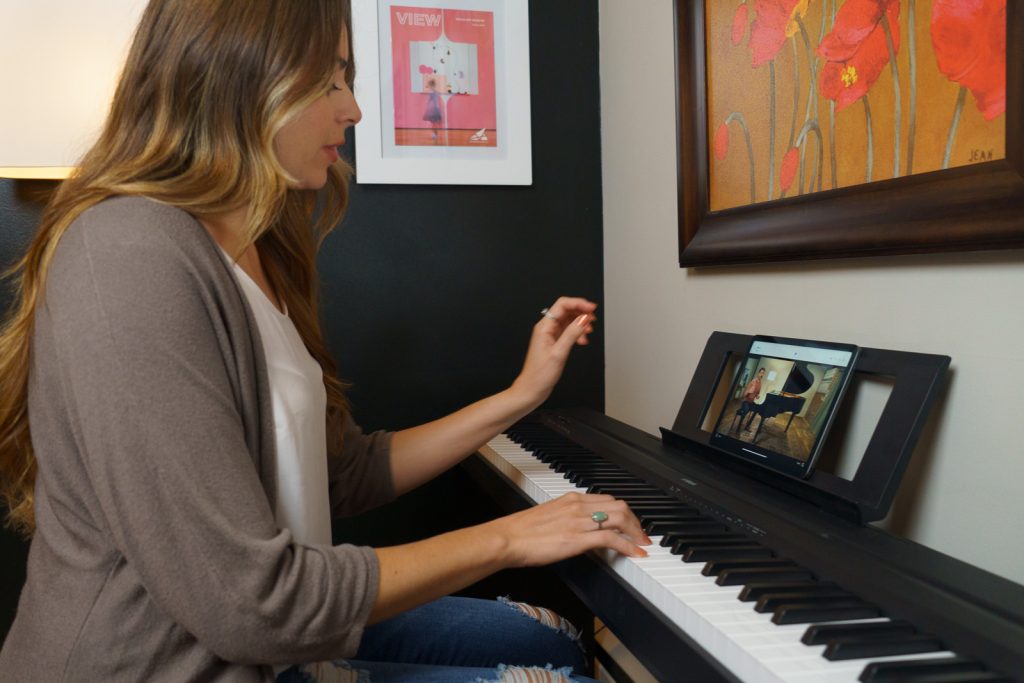
Remember that you’re doing this because you love music! It can be easy to beat yourself up because you’re not progressing as fast as you want. Instead, take a deep breath and pat yourself on the back for doing the best you can, and for developing a beautiful skill.
In terms of a specific practice routine, it’s important to experiment, to figure out what’s effective and enjoyable for you. Here are a couple things to try out:
- Warming up: some musicians like to jump straight in to practicing songs and pieces, without spending much time on learning piano basics, like technical exercises such as scales and arpeggios. For others, a physical and mental warm-up helps set the right tone for music practice. Try it both ways and see which you prefer.
- Breaking down the music: this includes practicing slowly or hands apart, breaking songs into segments, etc. Again, some musicians find it helpful to slow the music down, while others want to focus their energy on playing at the full tempo. The same can be said for practicing each hand separately, or practicing one section at a time. Breaking the music down is generally helpful, but there’s a balance to strike between simplifying musical challenges and building up your concentration and endurance.
How to play Hanon piano exercises
One popular source of warm-up exercises is Hanon’s “The Virtuoso Pianist.” This is a collection of technical exercises designed to develop finger dexterity and evenness of touch. Some pianists believe that the exercises are essential, while others argue that they can be harmful.
We believe that there’s no harm in practicing piano technique on its own. If you’re interested in the Hanon exercises, give them a shot: it can be fun to try to play them at full speed. But remember that exercises are just exercises! When beginning piano, don’t spend all of your precious practice time on them. Maybe there are some professional musicians out there who decided to pursue music because of their love of Hanon, but we haven’t met them yet!
What should you practice?
Of course, it’s important to play real music in some form, not just exercises! Besides, playing piano songs and pieces is more fun and satisfying than spending hours and hours on scales and Hanon. As a rule of thumb, you should be spending at least two-thirds of your practice time on genuine songs or pieces of music, appropriate to your skill level. We recommend starting with these must-learn piano songs for beginners.
How exactly should you structure that practice? Here are some ideas:
- Break down the music, in the ways discussed above.
- Train your ears: listen carefully to recordings and try to sing or play along with them.
- Train your inner ear: imagine the sound of the music in your head, possibly using the sheet music as a guide.
- Practice performing: imagine that you’re playing in front of an audience. Can you make it through the music without stopping?
Each of these ways of practicing has its own challenges. Working on all of them will make you a well-rounded and happy musician.
Can you over-practice piano?
Playing the piano is a physical and mental activity, and you should listen to your mind and body to tell you how much is enough. You should be physically comfortable whenever you practice. If your hands hurt after playing, that’s a sign that you’re practicing too much, or that you’re doing something physically unsustainable (maybe pressing down the keys too hard). You should also be mentally comfortable, meaning not so narrowly focused that you’ve become obsessive or distracted. Some people can play in an easy, relaxed way for hours, but it’s wise to schedule a short break every half hour, to check in with yourself. You can always stop for the day and come back tomorrow!
How long should you practice piano?
Most of us have non-musical jobs and other responsibilities, so it’s unrealistic to imagine that we can set aside hours and hours to practice every day, even if we want to. As addressed above, our minds and bodies have their own limitations as well. All of this is perfectly fine. The “ideal” practice time is whatever feels healthy, sustainable, and satisfying for you. If you have 4 hours a day to practice, and you love every minute of it, go for it, but if you have just 5 or 10 minutes a few times a week, that’s great too! It all counts.
How to improve piano practice
Finally, here are a couple tips for making practice more effective and rewarding:
- Mix up your practice routine. Be open to types of practice that are difficult or unfamiliar. Try new and different pieces of music.
- Give yourself a lot of credit for your successes: for the ways you’re challenging yourself, for the many things you’re learning, for the music you’re making. Thanks for reading, and happy practicing!
CHAPTER 7: Common questions about learning piano
Is learning piano as an adult harder?
No! Anyone can do it. Whether you’re 9 or 99, you can make progress and have fun as long as you set aside some time to practice. So, if you want to learn to play piano, don’t let your age stop you!
How long does it take to learn piano?
It doesn’t take long to start playing music that you care about!
If you want to learn to play piano, chances are there’s a song or piece of music that you love, and you want to know how to play it, or at least a part of it. You can start exploring that music from your first day of practice. Like anything in life, the more you put into it, the more you’ll get out of it, but making music, expressing yourself, and finding joy with the piano can happen right away, even on day one.
For some recommendations of songs to get you started, see our list of must-learn piano songs for beginners.
Can I learn piano by myself?
Yes! If you want to try learning on your own, you may want to consider a piano learning app. For example, Playground Sessions integrates video lessons, real-time feedback, and gaming elements to help you learn the music you love. It’s affordable and flexible. Even if you decide that you’d prefer to learn from a piano teacher, it may be worth supplementing your lessons with an app like this.
Can I learn to play piano on a keyboard?
Yes! Choosing a digital keyboard to learn piano makes a lot of sense, for the reasons we discuss in our chapter titled: Keyboard vs. Piano: Choosing What’s Best For You.
It’s true that an acoustic piano sounds and feels different from a keyboard, but this isn’t so important if you’re just starting out. Digital keyboards are generally much more affordable and convenient than acoustic pianos, and an excellent option if you’re looking to save yourself space, money, and a logistical headache.
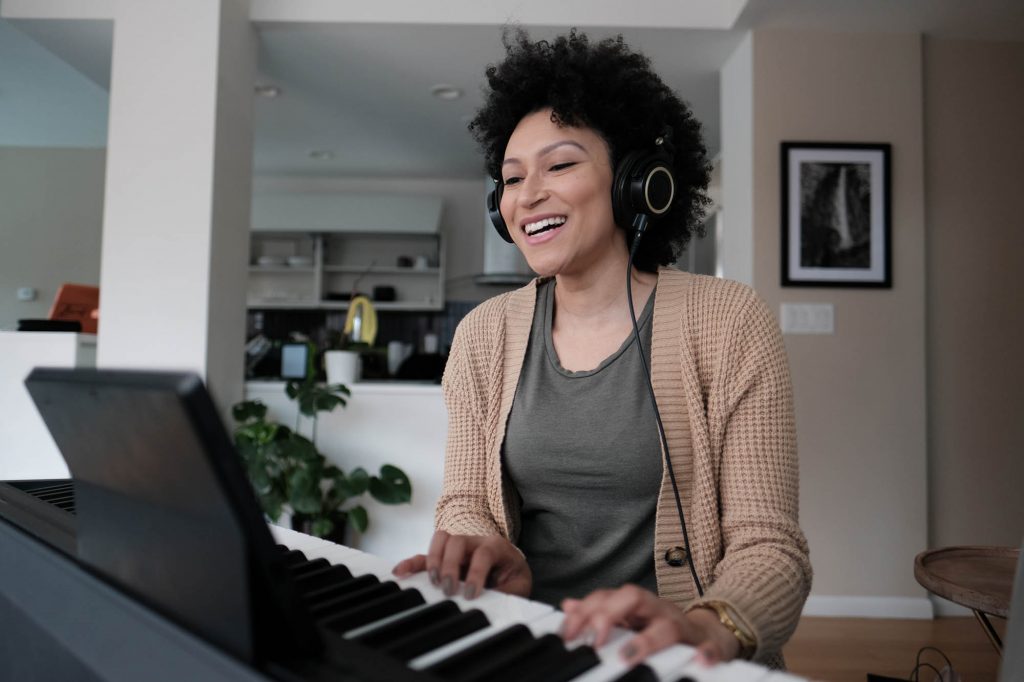
What is the best way to learn a new piano piece?
The best way is to mix up practice techniques. When you’re at the keyboard, it can be helpful to break the music down into chunks, to slow it down, and to play one hand at a time. You can also try singing the piece, imagining how it sounds in your head, playing along with a recording, or just reading along with the sheet music as you listen to it. The more you internalize the piece, the easier it will be to figure out how to play it. Given how many different ways there are to practice, it’s important to set a clear intention for each practice session, and to have some longer-term goals.
For more tips, check out our chapter on how to practice piano for beginners.
What if I don’t have enough time to practice?
We hear this one a lot. We’ll ask you this: how much time do you really have?
It may be that you do have the time, but instead of practicing piano (the thing you care about), you’re doing something else that’s less meaningful for you. In that case, it’s important to reflect on what’s keeping you from using your time effectively. The lack of a schedule or a clear, motivating goal may be holding you back.
It’s also possible that you really don’t have the time because of other important commitments. Don’t feel bad if you only have a few minutes to practice a few times a week! In this case, the best thing to do is set modest goals and give yourself credit for whatever practice you’re able to do. Everything counts.
Remember that there’s no ideal amount of practice time, but that it’s important to set goals that are proportional to the time you have. Finally, don’t forget to enjoy whatever practice you’re doing! Beginning piano and being involved with music in general should relieve stress, not add to it.
Do I need to know how to read sheet music?
No! You can play the piano without reading sheet music at all. Some famous musicians can’t read music.
Still, reading music is a useful and valuable skill. Even by learning to read notation just a little, you’ll find that it’s easier to learn songs, recognize musical patterns, and play along with other musicians.
See our chapter, How to read sheet music, for a short, clear, and fun introduction to music notation.
Where can I buy a piano or keyboard?
You may want to visit your local music store to try out some pianos or keyboards in person. Once you have a sense of what you want, you may want to look online to get a feel for the pricing.
See our chapter, Keyboard vs. piano: Choosing what’s right for you, for some more advice on this topic.
Thanks for reading our guide, How to play piano for beginners. Happy playing!
